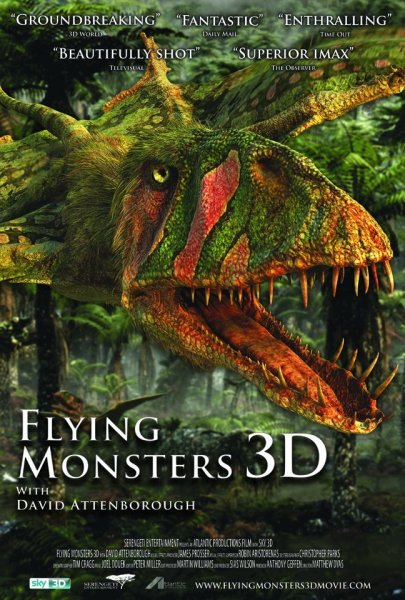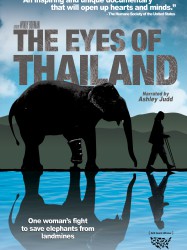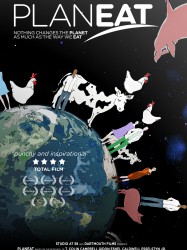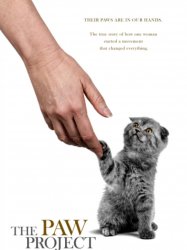Flying Monsters 3D with David Attenborough is a British film of genre Documentary released in USA on 7 october 2011
Flying Monsters 3D with David Attenborough (2011)

If you like this film, let us know!
- Infos
- Casting
- Technical infos
- Photos
- Videos
- Film quotes
- Characters
- Music
- Awards
Flying Monsters 3D is a natural history documentary about the pterosaurs. It was written and presented by David Attenborough and was produced by National Geographic and Atlantic Productions for Sky 3D. Originally broadcast on Christmas Day 2010, it was the first 3D documentary to be screened on British television and was released in theatres and IMAX cinemas the following year. Flying Monsters 3D went on to become the first 3D programme to win a BAFTA award.
Synopsis
Retour sur l'histoire des dinosaures volants, depuis les reptiles planeurs jusqu'à leur disparition et l'apparition des oiseaux. Les ptérosaures (Pterosauria) sont des vertébrés volants apparus au Trias supérieur, il y a environ 230 Millions d'années et disparus au Crétacé supérieur, il y a 65 Millions d'années. Les ptérosaures sont peut-être les tout premiers vertébrés volants de l'histoire du vivant. Ils possédaient de grandes ailes formées d'une série de membranes : la plus importante, le Cheiropatagium (aussi appelé Brachiopatagium) fixée au quatrième très long doigt de leurs membres supérieurs, une autre entre le poignet et le tronc, appelée Propatagium, soutenue par l'os Ptéroïde, et enfin une troisième rattachée à la cuisse et à la queue : le Cruropatagium. Ce sont des Diapsides archosaures ornithodiriens. Ce ne sont pas des dinosaures, et donc ce ne sont pas des oiseaux.Comments
Leave comment :
Suggestions of similar film to Flying Monsters 3D with David Attenborough
There are 8969 with the same cinematographic genres, 288 films with the same themes, to have finally 70 suggestions of similar films.If you liked Flying Monsters 3D with David Attenborough, you will probably like those similar films :

Ape and Super-Ape (1972)
, 1h44Directed by Bert Haanstra
Genres Documentary
Themes Documentaire sur une personnalité, Documentary films about nature
Actors Anton Koolhaas
Rating76%






The Eyes of Thailand (2012)
Origin USA
Genres Documentary
Themes Films about animals, Environmental films, Documentary films about animal rights, Documentary films about law, Political films, Documentary films about nature
Actors Ashley Judd
Rating71%





The Eyes of Thailand tells the true story of Soraida Salwala's 10-year quest to help two elephant landmine survivors, Motala and Baby Mosha, walk again after losing their legs in landmine accidents. Along with Soraida's efforts to care for the injured elephants and ultimately help them to walk again, the film also highlights the dangers posed by landmines.

The Hidden World (1958)
Origin USA
Genres Documentary
Themes Documentary films about nature
Actors Gregory Peck

Planeat (2010)
, 1h12Origin United-kingdom
Genres Documentary
Themes Films about animals, Environmental films, Documentary films about animal rights, Documentary films about law, Documentary films about environmental issues, Documentary films about health care, Political films, Documentary films about nature
Rating71%






Grand Canyon (1958)
, 29minutesDirected by James Algar
Origin USA
Genres Drama, Documentary, Musical
Themes Environmental films, Documentary films about environmental issues, Documentary films about nature, Children's films
Rating69%






Revolution (2012)
, 1h25Directed by Gus Van Sant, Rob Stewart
Origin Canada
Genres Documentary
Themes Films about animals, Environmental films, Films about sharks, Documentary films about animal rights, Documentary films about law, Documentary films about environmental issues, Political films, Documentary films about nature
Actors Rob Stewart
Rating72%





While on assignment to photograph sharks in the Galapagos Islands, Stewart became aware of illegal longlining, indiscriminately killing sharks within the marine reserve. In an effort to promote awareness of the situation, he decided to make a movie to bring people closer to sharks, a four-year effort that resulted in Sharkwater.

Directed by Penny Woolcock
Origin United-kingdom
Genres Documentary
Themes Films about animals, Environmental films, Seafaring films, Transport films, Documentary films about environmental issues, Documentary films about technology, Documentary films about nature
Rating79%






Wild Ocean (2008)
Genres Documentary
Themes Documentary films about nature
Rating65%





Soyez témoin de la lutte sous-marine quotidienne pour la survie des espèces... Chaque année, une incroyable frénésie agite les océans d'Afrique du Sud, alors que des milliards de sardines migrent jusqu'à la côte du KwaZulu-Natal.
 , 1h23
, 1h23Origin USA
Genres Documentary
Themes Films about animals, Documentary films about cities, Films about birds, Documentary films about nature
Rating77%






The Paw Project (2013)
, 58minutesOrigin USA
Genres Documentary, Historical
Themes Films about animals, Environmental films, Documentary films about animal rights, Documentary films about law, Films about cats, Political films, Documentary films about nature
Rating80%





Dr. Jennifer Conrad is a veterinarian who treats animals in Hollywood. She focuses on large exotic cats that are used in films, shows or living in animal sanctuaries. One of her patients is the fully declawed tiger who appears in the 2009 film The Hangover. Conrad finds that the cats she is working with are suffering greatly because of elective onychectomy surgeries, commonly known as declawing, that are being performed on them. Often these surgeries are undertaken with the intent on making the animal safer to work with, but, ironically, make the animals more irritable and can change their behavior.
 Connection
Connection